King Edward VIII and the coins that never were: As exhibition reveals monarch’s portrait and scrapped coinage, historian IAN LLOYD tells how ‘vain’ monarch fell out with the Royal Mint over his desire to sit looking left
King Edward VIII was known for his vanity.
As a young man he defied tradition by wearing the latest fashions, especially flannel trousers with sports jackets, turn-ups and plus-fours for golf.
The peculiar way he tied his tie has gone down in history as the ‘Windsor knot’.
He was also proud of his profile, especially his left side with its striking parting.
Unfortunately, this predilection for looking to the left would bring the king into direct conflict with the Royal Mint, leading to a violent dispute.
The royal furore over the production of coins for the king who was never crowned is one of the highlights of the new exhibition ‘Money Talks: Art, Society & Power’ at the Ashmolean Museum in Oxford.
This book explores the complex, tense and often humorous relationship between art, money and society, using over 100 objects, from ancient Persian gold coins to images by Grayson Perry and Banksy.
King Edward VIII looks left in a portrait photograph taken by Hugh Cecil for the planned depiction of the monarch on coins, 1936
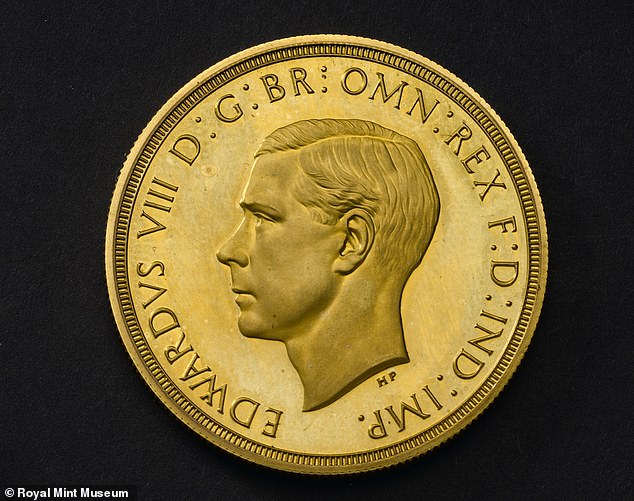
One of the sample coins produced by the Royal Mint featuring a profile of King Edward VIII. It is one of the highlights of a new exhibition ‘Money Talks: Art, Society & Power’ at the Ashmolean Museum in Oxford
British coinage has a strange tradition. Since the 17th century, the profile of a new monarch must face the opposite direction to that of his or her predecessor.
For 300 years this was not a problem, until the beloved Edward became king upon the death of his father George V in January 1936.
Unfortunately, George was a left-facing king, which meant Edward had to be depicted facing right.
Just a month after Edward’s accession, Sir Robert Johnson, Deputy Master of the Royal Mint, arrived at Buckingham Palace with a wax cast of the new design.
The King immediately complained that the coin was pointing to the left, whereupon Johnson returned to the Mint in disgrace.
To the great embarrassment of the palace, the wax model he had left with the king promptly (and suspiciously) disappeared.
In April Edward posed for two artists who made sketches for the new coin, one crowned and one uncrowned.
Johnson invited himself to answer any “tough” questions.
Edward stubbornly refused to sit facing right, ending the session in a major disagreement, with Johnson impressively urging the king to adhere to tradition.
“It is my face that must be used,” the prince furiously.
“Isn’t it fair that I at least have the privilege of deciding which side I want to highlight in public?”
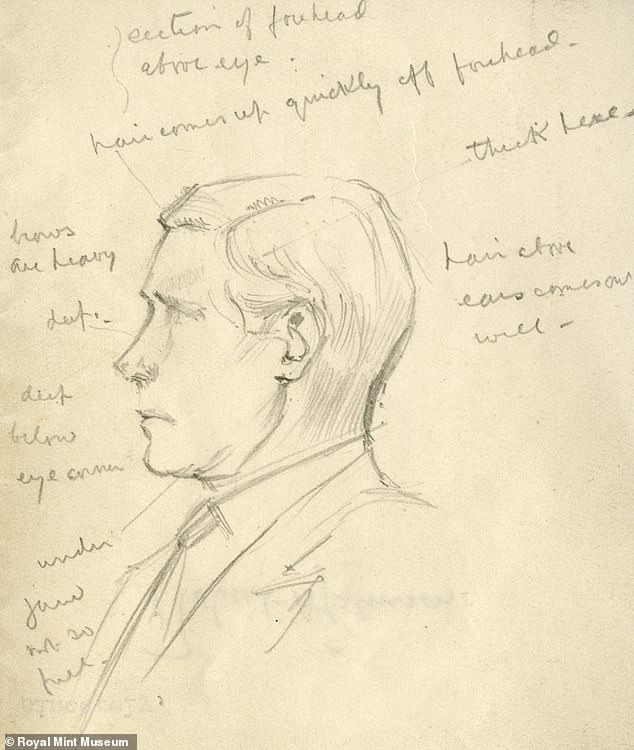
Thomas Humphrey Paget’s Study of Edward VIII on the Back of a Letter of Appointment
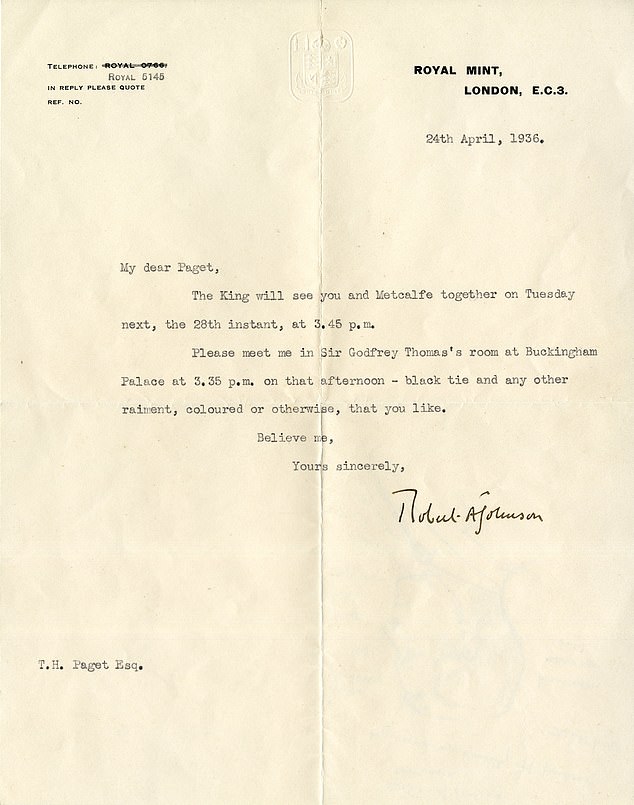
A letter to medal and coin designer Thomas Humphrey Paget arranging a meeting with him and King Edward VIII, along with fellow designer Percy Metcalfe, April 1936
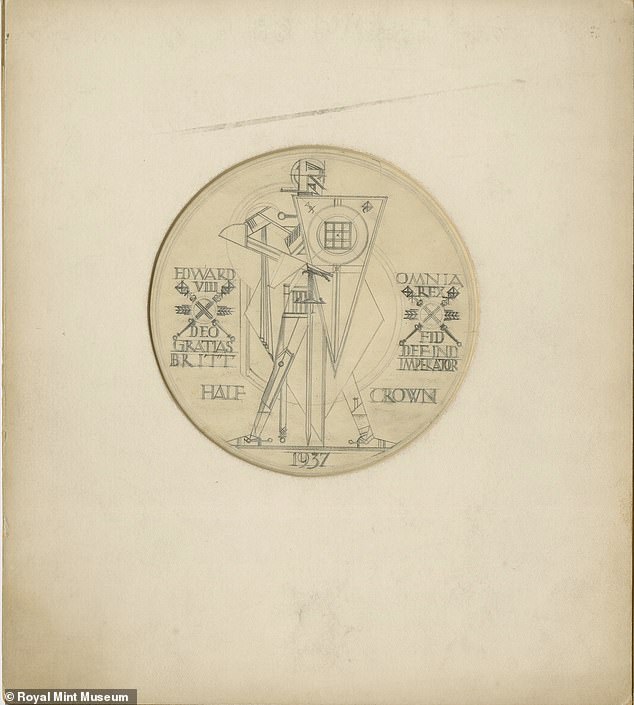
A rejected design for a half crown to feature the image of Edward VIII

The sample coins, known as ‘Patterns’, were produced after King Edward VIII succeeded his father in January 1936. They were due to go into production on 1 January 1937, but Edward’s abdication put a stop to the process. Edward later requested a set of the coins, but his brother, King George VI, refused

King Edward VIII was known for his vanity. Above: The then Prince of Wales in military uniform
Back at the Royal Mint, Johnson angrily contacted the Chancellor of the Exchequer, Neville Chamberlain, who held the ex officio position of Master of the Mint.

A January 1937 Daily Mail report detailing how the Royal Mint failed to reveal which way King George VI would go with his coinage
Jonson insisted that the king follow tradition. Chamberlain, who had more important things to do in his in-box, told Johnson to give Edward his way.
New wax models were made, looking to the left, hair neatly parted. The spiky Edward was delighted with the result.
The Royal Mint scheduled the public launch of the King Edward Penny for 8am on 1 January 1937. When the engineers pressed the button to start production, they must have been confident that nothing could go wrong.
Sadly, like 99.9 percent of the population, they had never heard of Wallis Simpson and the ill-fated royal romance that ended with his abdication on December 10, 1936.
After all the trouble of producing the coins, the Royal Mint now had the frustrating task of melting down thousands of coins, which would never again reach the hands of the public.
Fortunately, a handful of proof specimens have survived. In June 1938, Edward’s successor George VI (whose own coins were issued without anger and in record time) was informed of a few sets that had escaped the burning.
The new king asked if he could have one for the Royal Collection and of course it was sent.
The remaining sets were placed in a cardboard box and marked: ‘May only be opened in the presence of two high-ranking officials.’
One of these historic sample sets is on display in the Ashmolean exhibition.
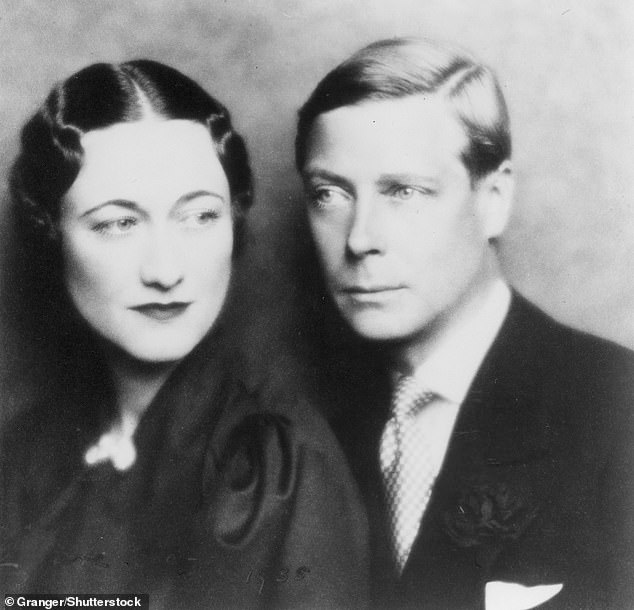
King Edward VIII abdicated the throne in December 1936 because of his desire to marry the divorced American Wallis Simpson
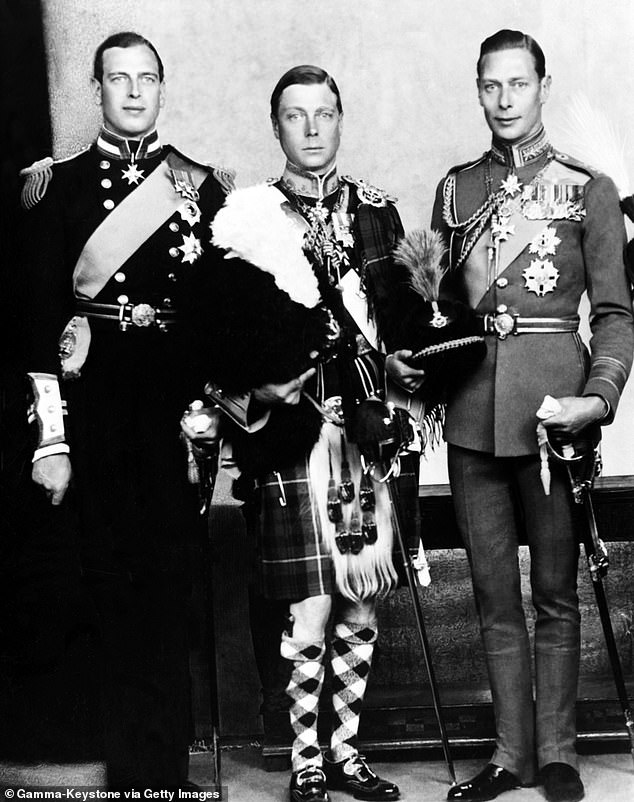
Edward, then the Prince of Wales, seen with his brothers, Prince Henry the Duke of Gloucester (left) and Prince Albert the Duke of York, who would later reign as King George VI
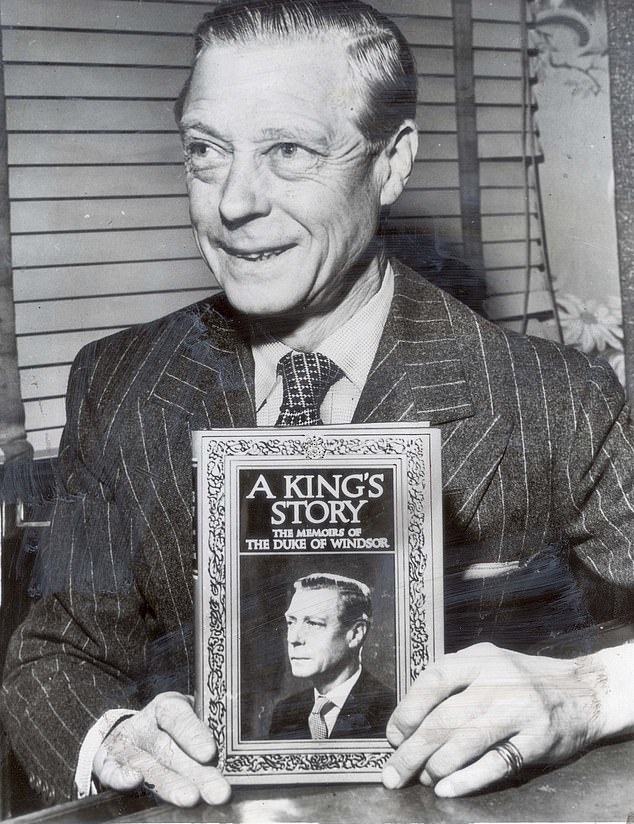
Former King Edward VIII, now the Duke of Windsor, holds up a copy of his 1951 memoir, A King’s Story
One person who did not receive a set of the coins was Edward himself. In 1951 he discovered the existence of the sets and asked the Royal Mint if he could have a set with his image on it.
The decision was referred up the chain of command to George VI himself, then suffering from cancer and also furious over the publication of his brother’s self-serving autobiography, A King’s Story, the previous year. He refused the request.
George VI also ignored Edward in the design of his own coinage. Like his father, George V, the new king also turned his face to the left on banknotes and coins.
The public, not having seen the coins from the Mint, would have assumed that Edward had rightly struck his coins if he had remained king.
Queen Elizabeth II, who became monarch after the death of her father George VI in 1952, was shown facing right on coins issued during her 70-year reign.
And on the recently released coins featuring King Charles, the monarch is again facing left. Oh, and he gets a send-off too!
Money Talks: Art, Society & Power is on display at the Ashmolean Museum in Oxford until 5 January 2025.
